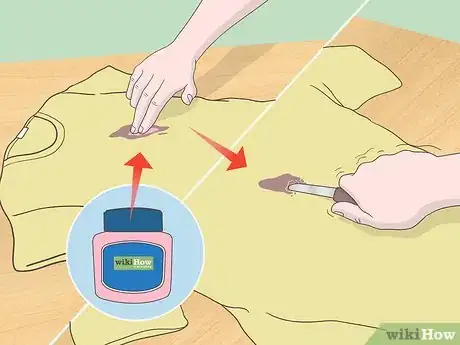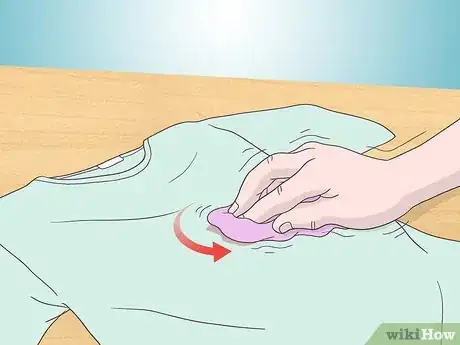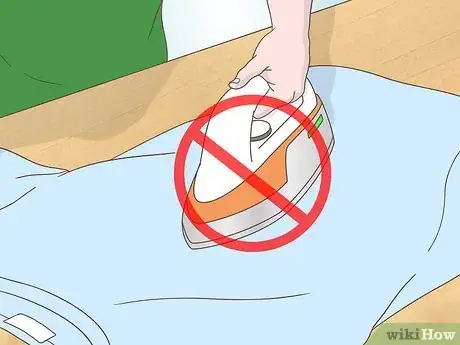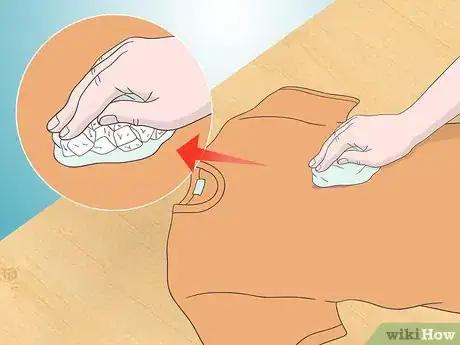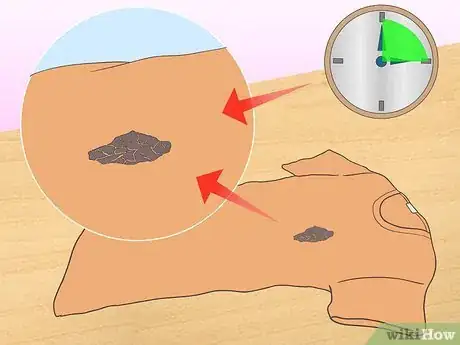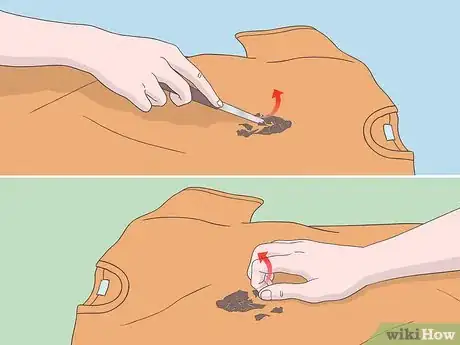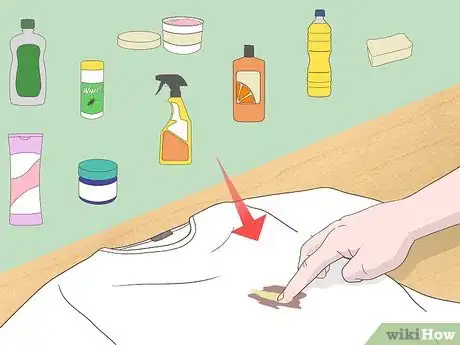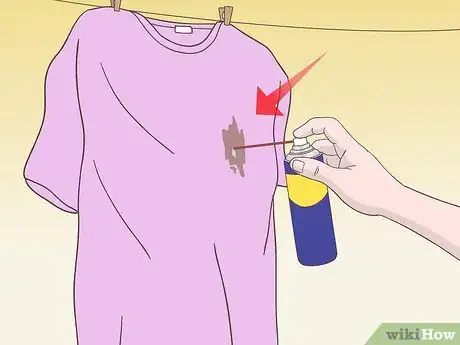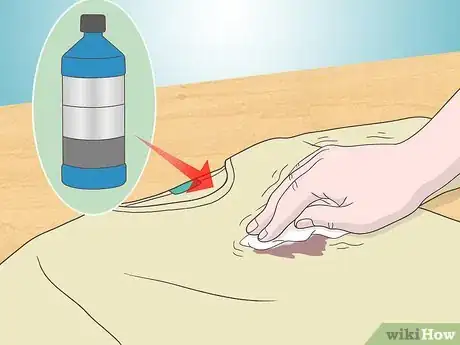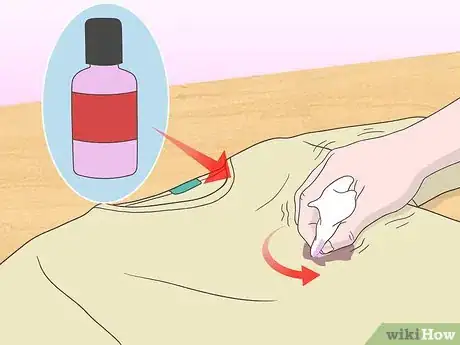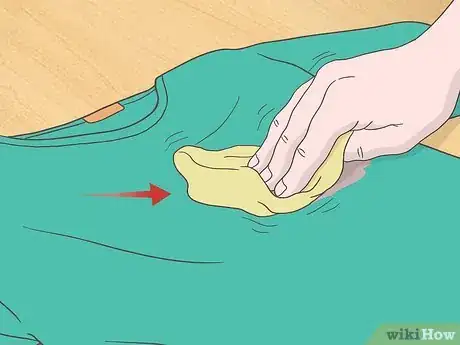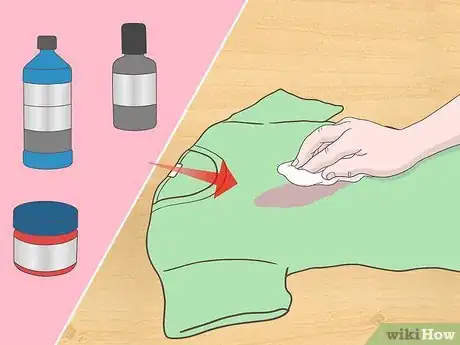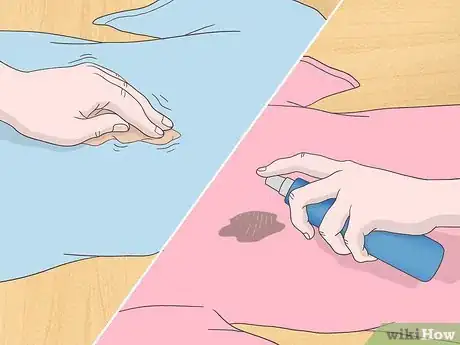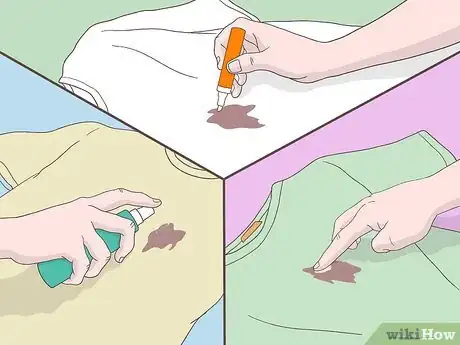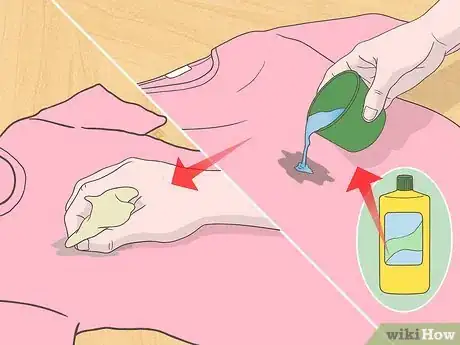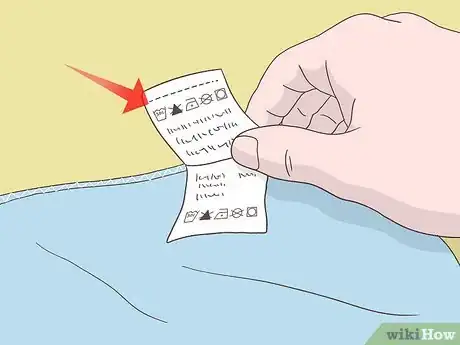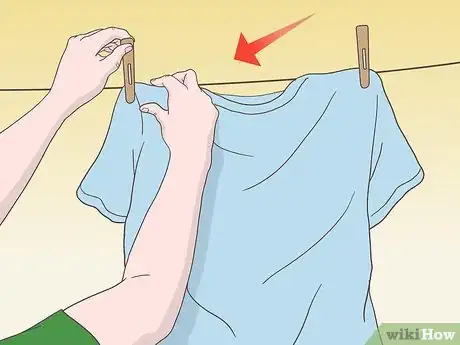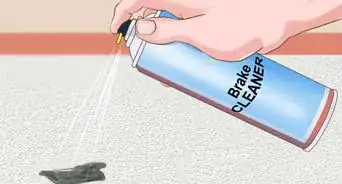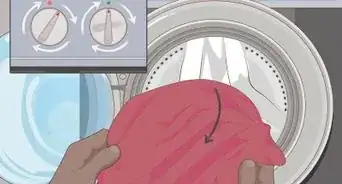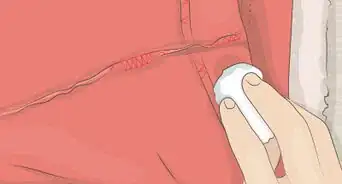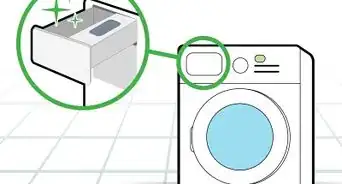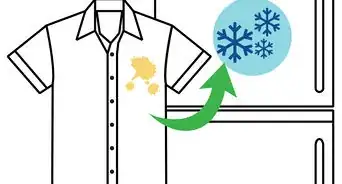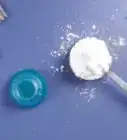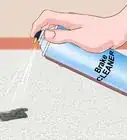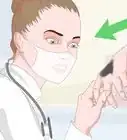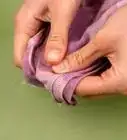wikiHow is a “wiki,” similar to Wikipedia, which means that many of our articles are co-written by multiple authors. To create this article, 19 people, some anonymous, worked to edit and improve it over time.
There are 8 references cited in this article, which can be found at the bottom of the page.
wikiHow marks an article as reader-approved once it receives enough positive feedback. In this case, 93% of readers who voted found the article helpful, earning it our reader-approved status.
This article has been viewed 536,186 times.
Learn more...
Have you gotten road or roofing tar or asphalt on clothes? If the fabric is machine-washable, then you may, at your discretion, choose among the techniques listed in this article to help remove the marks, smears, stains, pieces or particles.
Steps
Preparing for Removal
-
1Peel off as much tar as possible before treating. You can use a dull knife to gently scrape the tar off the fabric. Although hard tar is easier to pick off, the sooner you are able to pick the tar off, the easier the stain will be to remove.[1] [2]
- If the residue is very hard to get off, try rubbing some petroleum jelly on it and waiting a few minutes before trying to scrape.
-
2Test your chosen method on a small area or one garment.
- Some fabrics may be lightened in color, stained, weakened or have change in texture, grain or the lay of its nap from some of these cleaning methods.
Advertisement -
3Do not dry with heat.[3]
Removing a Thick Tar Piece/Glob (Freezing Method)
-
1Put pieces or cubes of ice in a plastic bag and rub the bag over the tar, if a piece or glob of tar is stuck to the fabric.[4]
-
2Let the tar freeze (harden) to become brittle.
-
3Peel away the brittle tar with finger nails or a smooth, dull knife (like a butter knife or case knife), spoon or an ice cream stick, when tar has hardened.
Removing Thin Smears or Spots (Oiling Method)
-
1Coat and soak with one of the following oily products/solvents:[5]
- Warmed (not too hot) lard, bacon grease or chicken fat-drippings;
- Vaseline, petroleum jelly, or chest vapor rub, mineral oil;
- Automobile tar and bug remover;
- Vegetable cooking oil;
- Orange hand cleaner.
-
2Or, take clothing outdoors and spray the spot with penetrating oil (WD40 or such) -- not near a flame or cigarette, etc.
-
3Similarly, take clothing outdoors and dab a small amount of white kerosene, paint thinner, mineral spirits, turpentine, alcohol or lamp-oil (not gasoline) onto a persistent stain with a white paper towel or cleaning rag -- not near a flame or cigarette, etc.
-
4Consider using fingernail polish remover as your solvent -- not near a flame or cigarette, etc.
-
5Remove dissolved, oiled, greased tar by rubbing with paper towel or cleaning rag.
-
6Repeat oily treatments, before washing: try a different solvent (volatile kinds, kerosene for instance), if the cooking fat or oil wasn't sufficient -- choosing from options above for stubborn spots.
Cleaning with Detergent
-
1Do this after one of the previous methods, or by itself.
-
2Treat with a prewash stain remover. Prewash stain removers come as a stick, a spray, or a gel.[6]
- Test the prewash stain remover on a part of your clothes that won't be noticed to make sure it doesn't affect the color of your garment.
- Apply the prewash stain remover directly to the stain. For sticks, rub the stain liberally with the stain remover. When using a spray stain remover, spray the stain until it is fully saturated. A gel stain remover should be applied liberally, until the stain is covered.
- Let the prewash stain remover sit on the stain for a period of time. Check the bottle for instructions on how much time to let it work.
-
3Apply a liquid enzyme laundry detergent to the stain.[7] Tar and asphalt stains are oil stains, so you need an enzyme laundry detergent to remove them.[8]
- Pour the enzyme laundry detergent directly onto the stain.
- Use a towel or paper towels to tamp the stain by pressing firmly on the stain and then lifting the towel back up.
- Press the stain several times with the towel, making sure to use a clean part of the towel every time you tamp.
-
4Launder the clothing in the hottest water possible for the fabric. Look at the tag on the clothing to find out what temperature water it can be washed in. Wash the clothing using the enzyme laundry detergent.[9]
-
5Hang clothes to air dry. Allow your clothing to air dry to avoid setting any part of the stain that wasn’t completely removed.
- If the stain remains, repeat the steps using a dry-cleaning solvent in place of the prewash stain remover.
Community Q&A
-
QuestionWhere do I buy automobile bug and tar remover?
 Community AnswerAny place that sells auto products should have it. Try parts houses, Walmart's auto section, and maybe even your grocery store.
Community AnswerAny place that sells auto products should have it. Try parts houses, Walmart's auto section, and maybe even your grocery store. -
QuestionCan I put WD-40 or any other product on my sweater that has a tar spot?
 Community AnswerYes. If the spot is small, get as much as you can off manually, spray, then dab with an absorbent material. The WD40 will thin the stain, and it could enlarge the stain area; keep spraying and blotting, and you should win.
Community AnswerYes. If the spot is small, get as much as you can off manually, spray, then dab with an absorbent material. The WD40 will thin the stain, and it could enlarge the stain area; keep spraying and blotting, and you should win. -
QuestionHow do I remove a small amount of road tar from my carpet in the house?
 Community AnswerIf it is just on a few fibers you can trim the fiber of the carpet, otherwise use Endust dusting spray. Saturate the area, then blot, rubbing only slightly to avoid fraying the fiber. After that use a detergent to remove the Endust, such as a dot of dish detergent and water. Rinse, and then use isopropyl alcohol to help dry the carpet. Test first in an inconspicuous spot for colorfastness.
Community AnswerIf it is just on a few fibers you can trim the fiber of the carpet, otherwise use Endust dusting spray. Saturate the area, then blot, rubbing only slightly to avoid fraying the fiber. After that use a detergent to remove the Endust, such as a dot of dish detergent and water. Rinse, and then use isopropyl alcohol to help dry the carpet. Test first in an inconspicuous spot for colorfastness.
Warnings
- Avoid breathing fumes of volatile/flammable cleaners -- and do not use them near a flame (pilot light) or cigarette, etc.⧼thumbs_response⧽
- Kerosene, and such will leave an unpleasant odor, which is hard to remove, even after washing.⧼thumbs_response⧽
- Avoid exposing the fabric to heat (cool-air dry only) until the stains have been removed.⧼thumbs_response⧽
- Have leather, suede, fur or leatherette, etc. professionally treated and cleaned.⧼thumbs_response⧽
- Avoid more damage, wash or clean by following the manufacturer's cleaning agents and fabric care instructions (temperature, and the kind of cleaning process, etc.), if you are concerned about that at all.⧼thumbs_response⧽
- Caution: avoid scalding (from heated cooking grease or hot water).⧼thumbs_response⧽
- Stains on "dry-clean-only" fabrics should be professionally treated and cleaned.⧼thumbs_response⧽
Things You'll Need
- Skin and hair protection
- Rubber or vinyl gloves
- Eye protection
- Manufacturer's cleaning instructions
- Solvent (probably oily)
- Volatile, more flammable solvent (optional)
- Degreaser (optional)
- Liquid dish or laundry detergent (for prewashing)
- Laundry detergent (for washing)
- Paper towels or cleaning rags
- Small scrubbing brush (such as an old toothbrush)
- Water for washing and rinsing
References
- ↑ https://www.goodhousekeeping.com/home/cleaning/tips/a15920/stains-tar-may07/
- ↑ http://www.cleaninginstitute.org/clean_living/stain_removal_chart.aspx#30
- ↑ https://extension.illinois.edu/stain/staindetail.cfm?ID=99
- ↑ https://ourpastimes.com/how-to-remove-tar-from-fabric-12108595.html
- ↑ https://lifehacker.com/remove-tar-from-clothing-with-olive-oil-5847254
- ↑ http://www.clothingdictionary.com/stain_removal_guide.htm
- ↑ https://www.goodhousekeeping.com/home/cleaning/tips/a15920/stains-tar-may07/
- ↑ http://www.goodhousekeeping.com/home/cleaning/tips/a15920/stains-tar-may07/
- ↑ http://www.johnson.k-state.edu/home-family/stain-removal.html
About This Article
If a piece of tar is stuck to your clothing, try filling a bag with ice cubes and rubbing it over the tar. Allow the tar to freeze and become brittle, then scrape it off with your fingernails or a dull knife. To get rid of smaller spots, try coating the affected area with vaseline or warm lard. Alternatively, take your piece of clothing outdoors, and dab a small amount of white kerosine or paint thinner on the spot. Finally, to remove the grease or oil, rub the area with a paper towel or rag. For tips on how to wash off tar using a detergent, read on!
